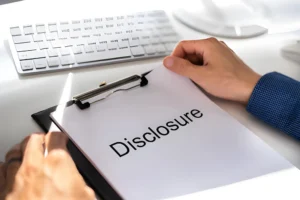In today’s era of smart boating, marine navigation apps have become essential tools for sailors, anglers, and recreational boaters. Among their many features, one key function often draws attention: the ability to alert users about shallow waters and navigational hazards. But how reliable are these alerts, and how do these apps stack up against traditional navigation methods?
If you’re wondering whether marine apps can truly enhance your safety and situational awareness on the water, this page dives into how these tools detect shallow zones, warn about dangers, and integrate real-time data to keep your voyage on track.
How Do Marine Apps Detect Shallow Waters?
Marine navigation apps rely on electronic nautical charts (ENCs) and vector data sourced from hydrographic agencies or private chart providers. These charts contain depth contours, seabed types, and known hazards like submerged rocks, reefs, and wrecks. When you plan a route or move along a track, the app continuously compares your position against this charted data.
Most apps allow you to set a minimum depth threshold. If your route crosses into shallower waters than your vessel’s draft requires, you’ll receive a visual or audible alert. This feature is particularly useful for sailboats and larger vessels with deeper drafts navigating in unfamiliar areas.
Apps like Navionics, iNavX, and TimeZero are known for providing real-time depth warnings, especially when connected to onboard sonar or depth sensors via NMEA or Wi-Fi.
Hazard Alerts: What to Expect
In addition to shallow water warnings, marine apps can flag other common navigational hazards, including:
- Submerged rocks or reefs
- Buoys and beacons
- Restricted zones or military areas
- Tide-related dangers
- Shipwrecks or obstructions
Some apps use crowdsourced data—user-submitted updates that inform others about hazards that might not be on official charts. This is particularly helpful in fast-changing environments like shifting sandbars or newly sunken objects.
However, while crowdsourcing can expand the reach of hazard alerts, it also introduces a margin of error. It’s crucial to confirm such data with reliable sources or official chart updates.
For more insight into the safety and effectiveness of crowdsourced marine data, this external guide to crowdsourced hydrographic information explores the benefits and limitations.
Real-Time Data and Connectivity
The most advanced marine apps pair with GPS and onboard sensors to deliver live depth tracking. Some apps go further by integrating with sonar systems, allowing users to create custom bathymetric maps. These tools provide an even more accurate picture of water depth in real time.
However, many features—like automatic hazard updates or online chart overlays—require an active internet connection. While your GPS will still function offline, hazard alerts based on real-time data (e.g., AIS collision warnings or tide changes) may not.
That’s why many apps offer offline chart downloads, which still include static hazard and depth information. If you’re boating in remote Australian waters, for example, downloading data in advance is critical.
Customizable Alerts and Notifications
Modern apps give you control over how you receive alerts. You can customize notifications based on:
- Minimum water depth
- Distance to hazard
- Proximity to land or obstructions
- Speed over ground (to detect potential grounding risk)
Many apps also feature route planning with hazard avoidance, where the software automatically recalculates paths around risky areas. This is particularly useful when planning multi-day coastal trips or navigating complex waterways.
Limitations to Consider
While the technology behind marine apps is impressive, there are limitations:
- Data freshness: Some hazards may not be updated in real-time, especially in remote areas or after storms that change seabeds.
- Chart quality: Not all marine charts have equal resolution. Low-res maps may miss critical depth details.
- Over-reliance on visuals: Bright daylight or wet screens can reduce visibility, so audible alerts are a must.
Moreover, apps are only as good as their input. If you’re not regularly syncing with updated charts or sensors, the information could be outdated or inaccurate.
Complementing Traditional Tools
Marine navigation apps should not replace traditional navigation practices—they should enhance them. Paper charts, depth sounders, and situational awareness remain vital, especially in areas known for shifting shoals or uncharted hazards.
A balanced approach that combines app-based navigation with real-time depth readings and visual lookout practices is always safest.
Final Thoughts
Marine navigation apps have come a long way in offering real-time alerts for shallow waters and hazards. With customizable settings, GPS integration, and increasingly accurate chart data, they provide a powerful digital layer of protection.
Also Read-Selecting the Right Tech Stack for Mobile App Success










